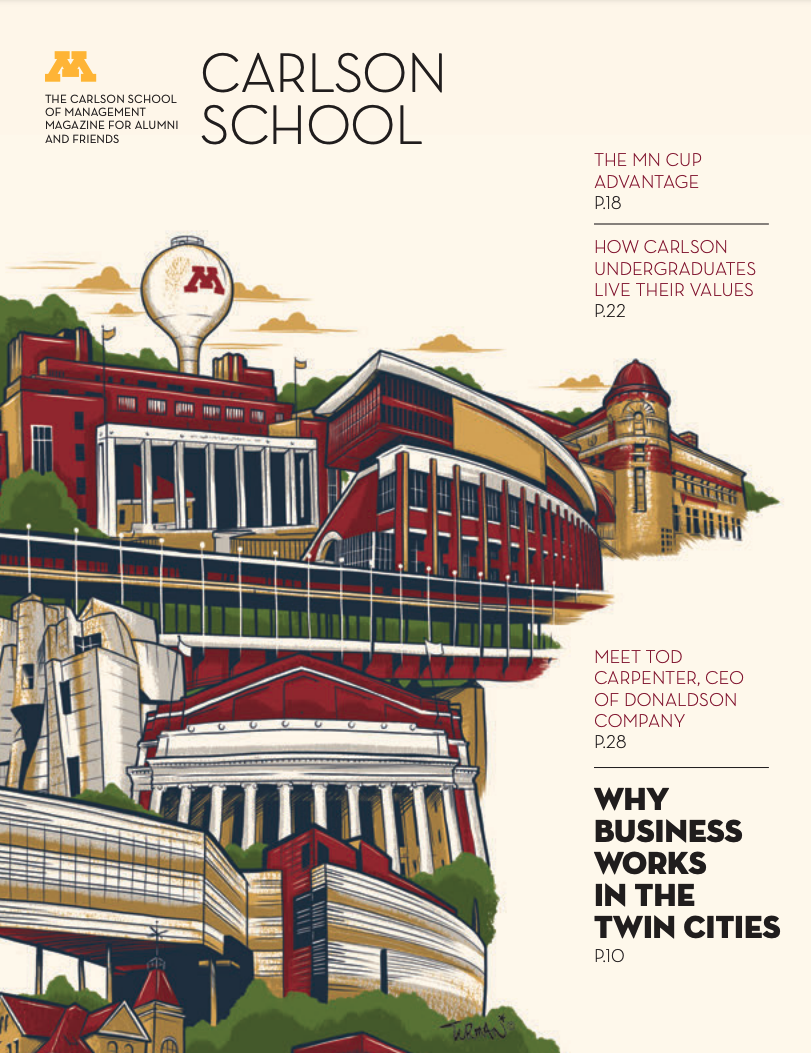
Multidisciplinary U Team Selected as Finalist in Healthcare App Challenge
Friday, December 7, 2018
A multidisciplinary University of Minnesota team is one step closer to an $87,000 prize as it was selected as one of 10 initial winners of the Agency for Healthcare Research and Quality (AHRQ) Step-Up App Challenge.
The challenge is to create a digital application that simplifies the process of collecting and sharing patient-reported outcome (PRO) data. PRO data is valuable in understanding the complex needs of patients and both they and their providers would greatly benefit from a robust digital collection system.
The U team’s winning concept is called PRISM, PROMIS Reporting and Insight System from Minnesota. PROMIS itself is an acronym – Patient Records and Outcome Management Information System – and is a paper-based PRO tool that has been used to great success by the HealthEast Kidney Stone Institute.
One of the co-leads of the project is Associate Professor Pinar Karaca-Mandic, the academic director of the Carlson School’s Medical Industry Leadership Institute (MILI). When she first heard of the challenge, she was drawn to it right away as it was a perfect match to one of her research interests – improving healthcare, particularly in regard to improving its value. “I’m drawn to ways to improve value combined with tech to help clinical decision making,” she says.
In assembling her team, she first reached out to Steve Johnson, an assistant professor at the U’s Institute for Health Informatics. Karaca-Mandic is also a core faculty member at the institute and knew that Johnson would be driven by the same goal of improving healthcare value, and would also bring insights from informatics. Prior to coming to the University six months ago, he served as vice president of product development and chief technology officer for a number of companies. Johnson immediately signed on as a co-lead.
“I have experience in building products,” he says. “My expertise is in software development and health technology and the ways to integrate workflows, including mobile apps, into the EHR [electronic health records].”
Also brought on board was Elisha Friesema, ’18 MBA. “They approached me to participate given my research background and past success in creating cases for several national business case competitions,” she said. As a student, Friesema was one of the founders of CEASE, a program designed to combat the country’s opioid epidemic. CEASE took first place at the Business School Alliance for Health Management Case Competition in 2018. As far as Karaca-Mandic’s project, Friesema was all for it.
“My passion lies in addressing the social determinants of health and ensuring patients continually access high-quality and affordable care, so this project to create a more patient-friendly way to obtain and utilize patient-reported outcomes aligns perfectly,” she said.
Karaca-Mandic also approached Carla Pavone, the associate director of the Holmes Center for Entrepreneurship. “When you are thinking about innovation, you can’t forget the Holmes Center,” Karaca-Mandic said.
Pavone has been part of the planning process and will be heavily involved in the development of the app.
Speaking of which, the teammates soon realized that they didn’t have someone to actually develop the app. However, another team member, Information and Decision Sciences Associate Professor and MSBA Director De Liu, recommended Zach McGill, CEO of Perk Health, a local startup specializing in digital health.
But there was one other important piece missing. “We met and realized we didn’t have a clinician,” Karaca-Mandic said. Michael Borofsky and Andrew Portis, two U of M physicians from the Healtheast Kidney Stone Institute, were approached. As mentioned earlier, PRISM has elements in common with what Borofsky and Portis have been working within their practice. “They were actually quite excited about the project,” Karaca-Mandic said.
Johnson said it was critical that doctors were included as they’ve actually used PROs, have found them helpful, and know how to engage patients. “The project is a perfect example of something that couldn’t be done by one department at the University,” said Johnson. “We have the ideal mix of exactly who we need for this project to succeed.”
Pavone agrees. “I think one of the reasons that the University of Minnesota was chosen to go forward with the application process was because of this unique mix of expertise from across the University,” she said.
Finalists for the next round will be selected in February, but Karaca-Mandic thinks her team is already a winner. “The future of our educational system is our interdisciplinary nature. I don’t think we can stay in our silos. We can’t afford to just work in our department, school, or university,” she said. “I think this project brings it all together. If this doesn’t win, it’s a win in that way.”
